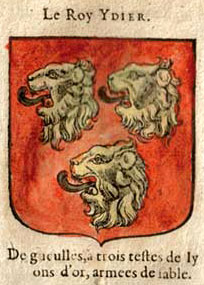
The Round Table is King Arthur's famed table in the Arthurian legend, around which he and his knights congregate. As its name suggests, it has no head, implying that everyone who sits there has equal status, unlike conventional rectangular tables where participants order themselves according to rank. The table was first described in 1155 by Wace, who relied on previous depictions of Arthur's fabulous retinue. The symbolism of the Round Table developed over time; by the close of the 12th century, it had come to represent the chivalric order associated with Arthur's court, the Knights of the Round Table.

Gwyn ap Nudd is a Welsh mythological figure, the king of the Tylwyth Teg or "fair folk" and ruler of the Welsh Otherworld, Annwn, and whose name means “Gwyn, son of Nudd”. Described later on as a great warrior with a "blackened face", Gwyn is intimately associated with the otherworld in medieval Welsh literature, and is associated with the international tradition of the Wild Hunt.
Creiddylad, daughter of King Lludd, is a minor character in the early medieval Welsh Arthurian tale Culhwch ac Olwen.

Guinevere, also often written in Modern English as Guenevere or Guenever, was, according to Arthurian legend, an early-medieval queen of Great Britain and the wife of King Arthur. First mentioned in literature in the early 12th century, nearly 700 years after the purported times of Arthur, Guinevere has since been portrayed as everything from a fatally flawed, villainous, and opportunistic traitor to a noble and virtuous lady. The variably told motif of abduction of Guinevere, or of her being rescued from some other peril, features recurrently and prominently in many versions of the legend.

The Mabinogion is a collection of the earliest Welsh prose stories, compiled in Middle Welsh in the 12th–13th centuries from earlier oral traditions. There are two main source manuscripts, created c. 1350–1410, as well as a few earlier fragments. Often included in the broader mythologies described as the Matter of Britain, the Mabinogion consists of eleven stories of widely different types, offering drama, philosophy, romance, tragedy, fantasy and humour. Strictly speaking, the Four Branches of the Mabinogi are the main sequence of related tales, but seven others include a classic hero quest, "Culhwch and Olwen"; a historic legend, complete with glimpses of a far off age, in "Lludd and Llefelys"; and other tales portraying a very different King Arthur from the later popular versions.

Bedivere is one of the earliest characters to be featured in the legend of King Arthur, originally described in several Welsh texts as the one-handed great warrior named Bedwyr Bedrydant. Arthurian chivalric romances, inspired by his portrayal in the chronicle Historia Regum Britanniae, portray Bedivere as a Knight of the Round Table of King Arthur who serves as Arthur's marshal and is frequently associated with his brother Lucan and his cousin Griflet as well as with Kay. In the English versions, Bedivere notably assumes Griflet's hitherto traditional role from French romances as the one who eventually returns Excalibur to the Lady of the Lake after Arthur's last battle.
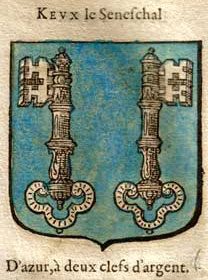
In Arthurian legend, Kay is King Arthur's foster brother and later seneschal, as well as one of the first Knights of the Round Table. In later literature he is known for his acid tongue and bullying, boorish behaviour, but in earlier accounts he was one of Arthur's premier warriors. Along with Bedivere, with whom he is frequently associated, Kay is one of the earliest characters associated with Arthur. Kay's father is called Ector in later literature, but the Welsh accounts name him as Cynyr Ceinfarfog.
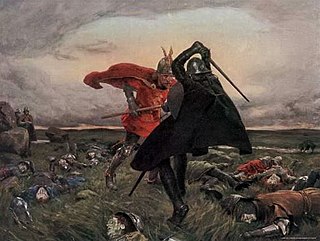
The Battle of Camlann is the legendary final battle of King Arthur, in which Arthur either died or was mortally wounded while fighting either alongside or against Mordred, who also perished. The original legend of Camlann, inspired by a purportedly historical event said to have taken place in the early 6th-century Britain, is only vaguely described in several medieval Welsh texts dating from around the 10th century. The battle's much more detailed depictions have emerged since the 12th century, generally based on that of a catastrophic conflict described in the pseudo-chronicle Historia Regum Britanniae. The further greatly embellished variants originate from the later French chivalric romance tradition, in which it became known as the Battle of Salisbury, and include the 15th-century telling in Le Morte d'Arthur that remains popular today.

Welsh mythology consists of both folk traditions developed in Wales, and traditions developed by the Celtic Britons elsewhere before the end of the first millennium. As in most of the predominantly oral societies Celtic mythology and history were recorded orally by specialists such as druids. This oral record has been lost or altered as a result of outside contact and invasion over the years. Much of this altered mythology and history is preserved in medieval Welsh manuscripts, which include the Red Book of Hergest, the White Book of Rhydderch, the Book of Aneirin and the Book of Taliesin. Other works connected to Welsh mythology include the ninth-century Latin historical compilation Historia Brittonum and Geoffrey of Monmouth's twelfth-century Latin chronicle Historia Regum Britanniae, as well as later folklore, such as the materials collected in The Welsh Fairy Book by William Jenkyn Thomas (1908).
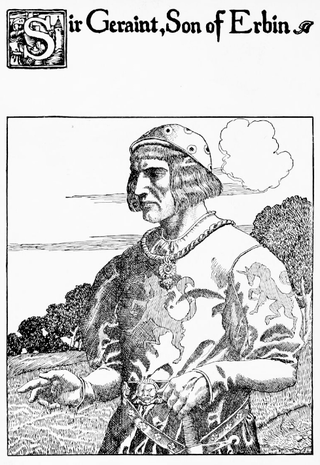
Geraint is a character from Welsh folklore and Arthurian legend, a valiant warrior possibly related to the historical Geraint, an early 8th-century king of Dumnonia. It is also the name of a 6th-century Dumnonian saint king from Briton hagiographies, who may have lived during or shortly prior to the reign of the historical Arthur. The name Geraint is a Welsh form of the Latin Gerontius, meaning "old man".
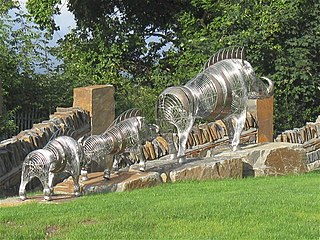
Twrch Trwyth, is a fabulous wild boar from the Legend of King Arthur, of which a richly elaborate account of its hunt described in the Welsh prose romance Culhwch and Olwen, probably written around 1100.

Erec and Enide is the first of Chrétien de Troyes' five romance poems, completed around 1170. It is one of three completed works by the author. Erec and Enide tells the story of the marriage of the titular characters, as well as the journey they go on to restore Erec's reputation as a knight after he remains inactive for too long. Consisting of about 7000 lines of Old French, the poem is one of the earliest known Arthurian romances in any language, predated only by the Welsh prose narrative Culhwch and Olwen.
The Three Welsh Romances are three Middle Welsh tales associated with the Mabinogion. They are versions of Arthurian tales that also appear in the work of Chrétien de Troyes. Critics have debated whether the Welsh Romances are based on Chrétien's poems or if they derive from a shared original. The Romances survive in the White Book of Rhydderch and the Red Book of Hergest, both from the 14th century, though the material is at least as old as Chrétien.
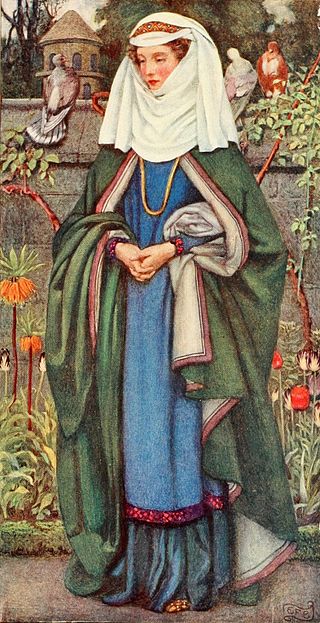
Enide is a character in Arthurian romance. She is married to Erec in Chrétien de Troyes' Erec and Enide, and to Geraint in the Welsh romance of Geraint and Enid analogous to Chrétien's version. Some scholars believe the French and Welsh tales derive from a lost common source, but it seems more likely Geraint derives directly or indirectly from Erec, though Chrétien may have had a Welsh or Breton source.
Pridwen was, according to the 12th-century writer Geoffrey of Monmouth, King Arthur's shield; it was adorned with an image of the Virgin Mary. Geoffrey's description of it draws on earlier Welsh traditions found in Preiddeu Annwfn, Culhwch and Olwen, and the Historia Brittonum. The shield is also named and described by Wace, Layamon, Roger of Wendover and Robert of Gloucester among other medieval writers, and it directly inspired the description of Sir Gawain's shield in Sir Gawain and the Green Knight.
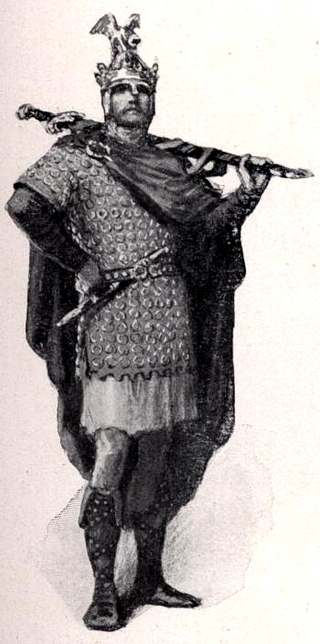
King Arthur's family grew throughout the centuries with King Arthur's legend. The earliest Welsh Arthurian tradition portrays Arthur as having an extensive family network, including his parents Uther Pendragon and Eigyr (Igraine), wife Gwenhwyfar (Guinevere), nephew Gwalchmei (Gawain), brother, and several sons; his maternal lineage is also detailed, linking him to relatives such as his grandfather. This complex familial structure has been both simplified and expanded in the common tradition of shared British, French, and other medieval European chronicles and romances, which instead introduced new characters, such as Arthur's half-sisters including Morgan, their children including Mordred, and others. Arthur's lineage was later claimed by various rulers, in particular the House of Tudor and Scottish clans, reflecting the enduring legacy of his familial ties in medieval and early modern genealogies.
Gwrhyr Gwalstawd Ieithoedd; "Gwrhyr, Interpreter of Languages" is a hero and shapeshifter of early Welsh literature and mythology and a warrior of King Arthur's court at Celliwig. He appears most prominently in the early Arthurian tale Culhwch and Olwen, in which he is handpicked among Arthur's knights to accompany Culhwch on his quest to win Olwen.
Goreu fab Custennin is a hero of Welsh and early Arthurian mythology, the son of Custennin, and cousin to Arthur, Culhwch and Saint Illtud through their grandfather Amlawdd Wledig. He is a significant character in the Middle Welsh Arthurian tale Culhwch and Olwen, and also appears in a number of other medieval texts. His name may be derived from Gorneu; "of Cornwall."
Rhongomyniad, or Rhongomiant, was the spear of King Arthur in the Welsh Arthurian legends. Unlike Arthur’s two other weapons, his sword Caledfwlch and his dagger Carnwennan, Rhongomyniad has no apparent magical powers.

